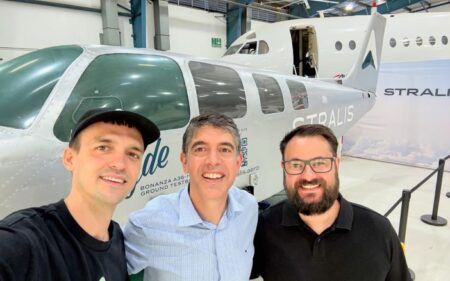Airbus Group brought its experimental electric testbed aircraft, the E-Fan 1.2, to EAA AirVenture in Oshkosh, Wisconsin, where it debuted on July 25. It has now been fitted with a small two-cycle engine to generate electricity to extend its range.
“Hybrid electric flight represents one of the biggest industrial challenges of our time, and our goal is to create aircraft designs that generate zero emissions,” said Andy Anderson, chief operating officer for the Corporate Technology Office at Airbus Group.
“With the E-Fan 1.2, we’re continuing to explore innovative approaches to more environmentally friendly technologies as possible alternatives to fossil fuels. Using insights gained from the E-Fan program, we hope to reduce – and possibly eliminate – the use of fossil fuels in aviation design within the next 30 to 40 years.”
The company developed the experimental aircraft E-Fan 1.1 to validate the concept of electric-powered flight, and last year it became the first electric-powered airplane to cross the English Channel.
The E-Fan 1.2 operates with a hybrid engine to reduce noise, vibration and weight while increasing battery capacity and extending its range. The test aircraft has a significantly reduced noise level and operates on an electric taxiing system. Yesterday’s US debut provided aviation experts and enthusiasts the opportunity to view the hybrid engine for the first time and learn more about Airbus Group’s vision for the future of green aviation.
Since its founding in 2011, the Airbus E-Fan project has worked to develop aircraft that are more energy efficient. The project is aligned with the European Commission’s Flightpath 2050 initiative, which calls for significant reductions in aircraft carbon dioxide emissions and noise to ensure the sustainable development of the aviation industry.
Additionally, as a highly innovative technology flying test bed, the Airbus E-Fan is promoting research in electric propulsion and the certification of electrical flight concepts.
July 29, 2016




